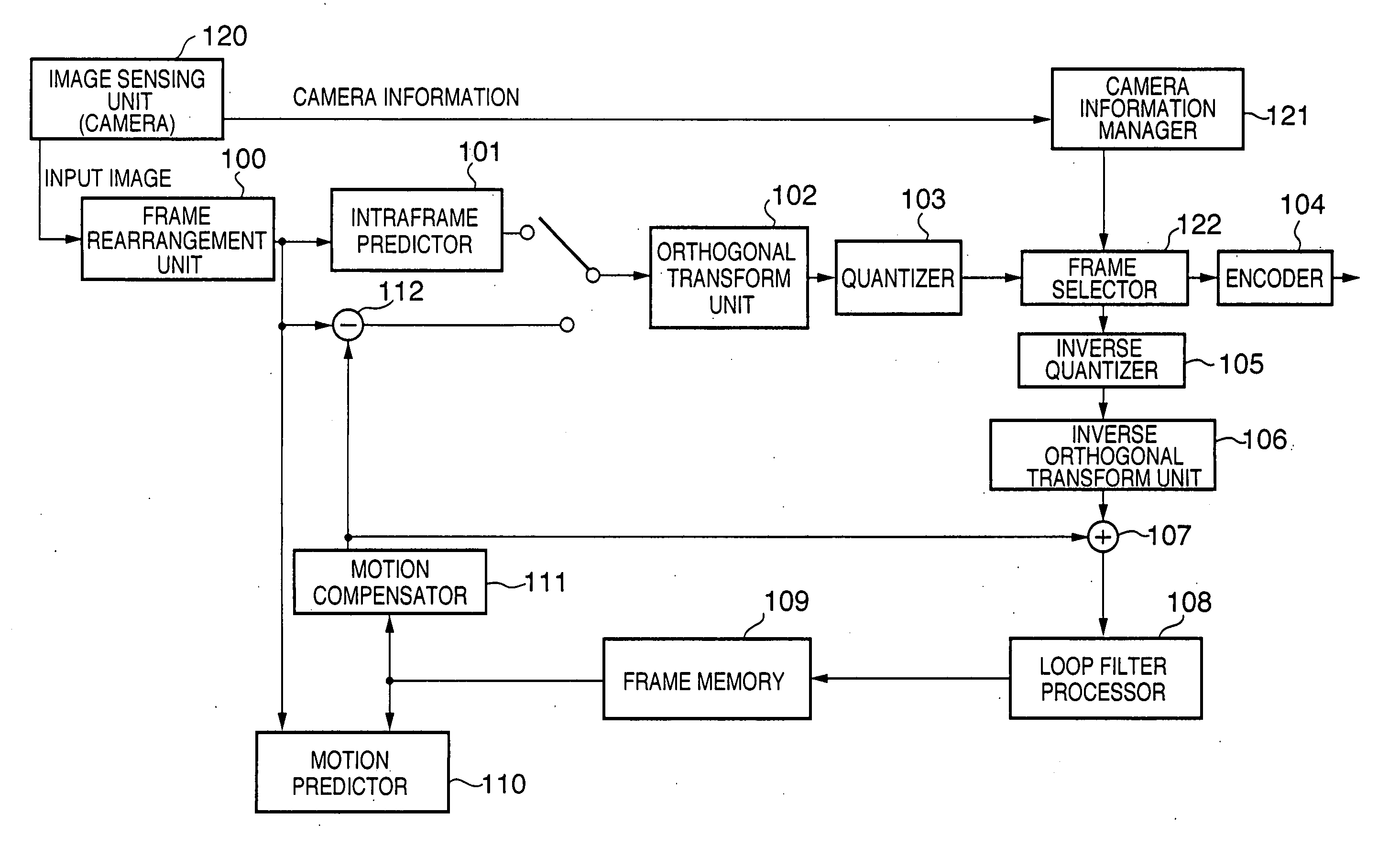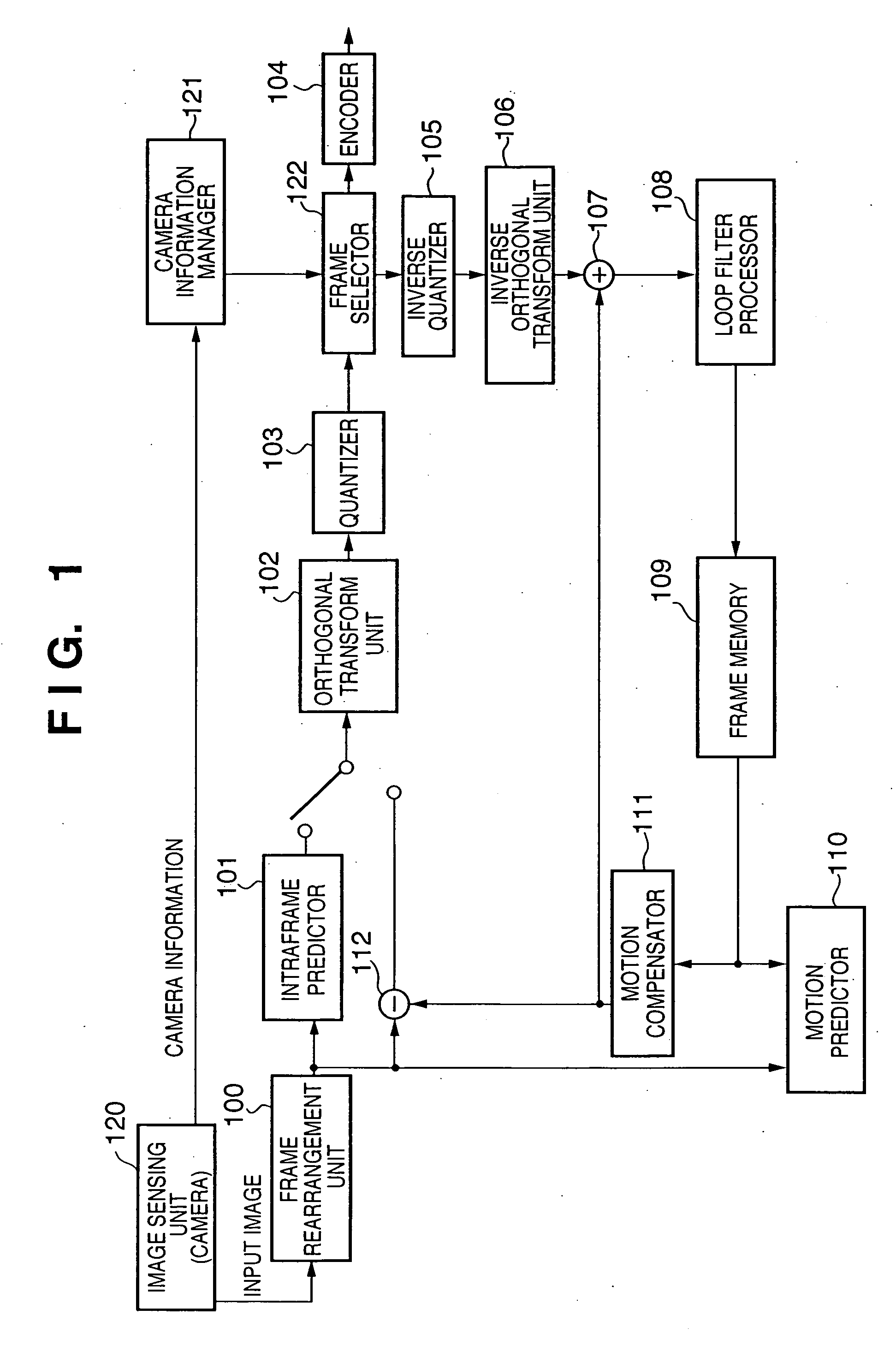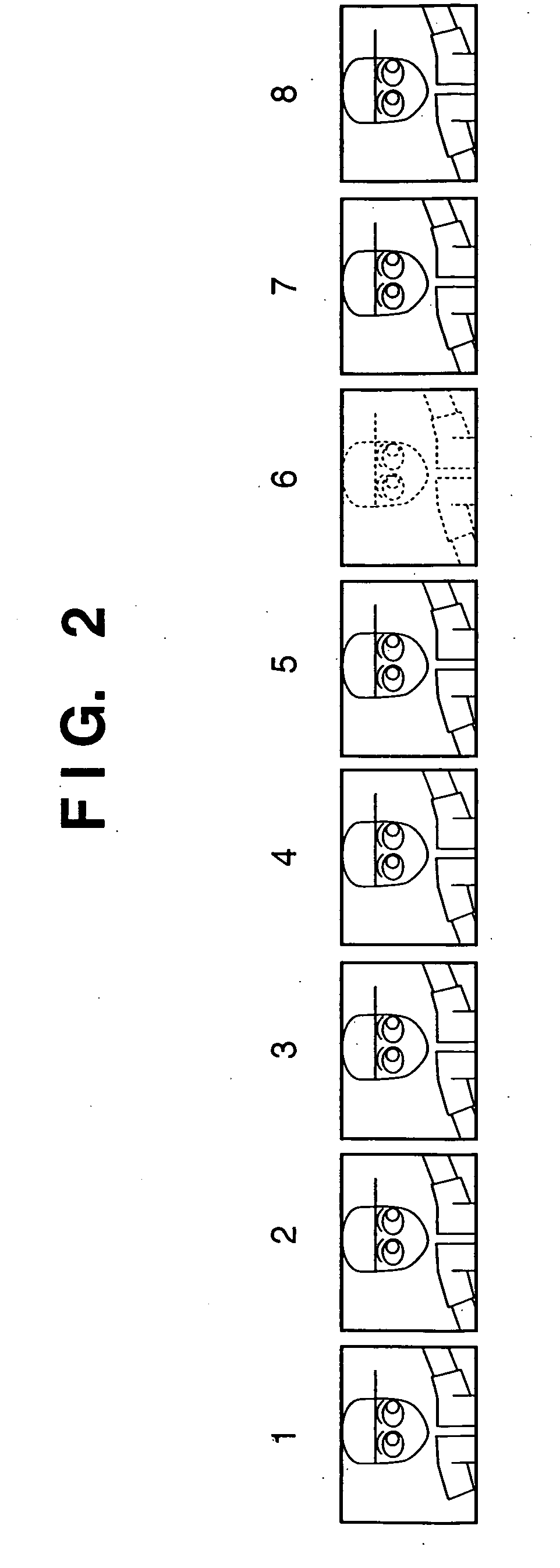Moving image encoding apparatus and control method therefor
a technology of moving image and encoding apparatus, which is applied in the direction of color television with bandwidth reduction, television system, instruments, etc., can solve the problem of dramatic increase in the volume of calculations to be performed
- Summary
- Abstract
- Description
- Claims
- Application Information
AI Technical Summary
Benefits of technology
Problems solved by technology
Method used
Image
Examples
first embodiment
[0042]FIG. 1 is a block diagram showing an example of the configuration of a digital video camera as a moving image encoding apparatus according to a first embodiment of the present invention. The digital video camera of the present embodiment is characterized by selecting a locally-decoded image recorded in the frame memory as the reference image using the camera information.
[0043] In FIG. 1, the digital video camera of the present embodiment is comprised of a frame rearrangement unit 100, an intraframe predictor 101, an orthogonal transform unit 102, a quantizer 103, an encoder 104, an inverse quantizer 105, an inverse orthogonal transform unit 106 and an incrementer 107, and further comprises a loop filter processor 108, a frame memory 109, a motion predictor 110, a motion compensator 111 and a decrementer 112, that is, the components of the same name in FIG. 13 generalized as the fundamental configuration. In addition to the foregoing elements, the digital video camera of the p...
second embodiment
[0086] In the first embodiment of the present invention, image frames not to be recorded in the frame memory are identified on the basis of the camera information, with frames likely to be of high continuity stored in the frame memory 109 as reference image candidate images.
[0087] A second embodiment is characterized by using the camera information to select images that should not be kept in the frame memory and which should be deleted first. In this embodiment as well, as with the first embodiment, the description proceeds using the example of a moving image compression-encoding apparatus equipped with an image sensing capability.
[0088]FIG. 6 is a block diagram showing an example of the configuration of a video camera as the moving image compression-encoding apparatus of the present embodiment, with the same elements as the first embodiment given the same reference numerals.
[0089] In FIG. 6, because the distinctive feature of the present embodiment is the use of a camera informa...
third embodiment
[0107] A third embodiment is characterized by determining which of the image frames recorded in the frame memory are to be detected based on the camera information. In this embodiment as well, as with the embodiments described above, the description proceeds using the example of a moving image compression-encoding apparatus equipped with an image sensing capability.
[0108]FIG. 8 is a block diagram showing an example of the configuration of a video camera as the moving image compression-encoding apparatus of the present embodiment, with the same elements as the first embodiment given identical reference numerals.
[0109] As shown in FIG. 8, because the distinctive feature of this embodiment is the operation of the camera information manager 821 and the motion predictor 810, a description is given only of these elements. It should be noted that, in the present embodiment, the frame memory 109 is capable of recording five frames of images.
[0110] As with the embodiments described above,...
PUM
 Login to View More
Login to View More Abstract
Description
Claims
Application Information
 Login to View More
Login to View More - R&D
- Intellectual Property
- Life Sciences
- Materials
- Tech Scout
- Unparalleled Data Quality
- Higher Quality Content
- 60% Fewer Hallucinations
Browse by: Latest US Patents, China's latest patents, Technical Efficacy Thesaurus, Application Domain, Technology Topic, Popular Technical Reports.
© 2025 PatSnap. All rights reserved.Legal|Privacy policy|Modern Slavery Act Transparency Statement|Sitemap|About US| Contact US: help@patsnap.com



